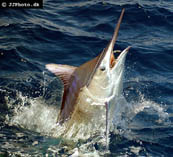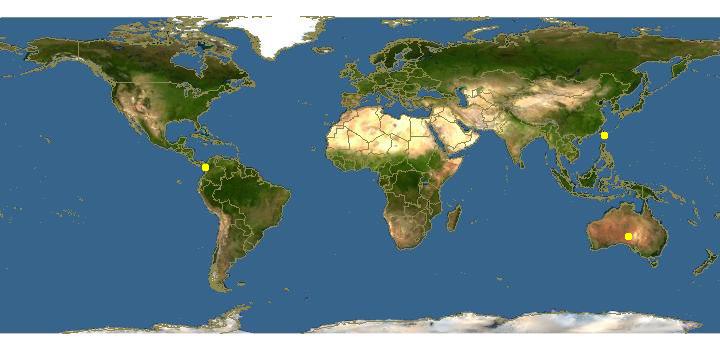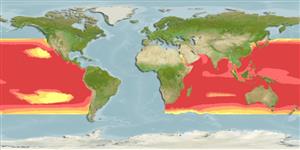http://www.fishbase.org/Summary/speciesSummary.php?genusname=Istiompax&speciesname=indica ---> http://192.134.151.83/Summary/speciesSummary.php?genusname=Istiompax&speciesname=indica
http://192.134.151.83/Summary/speciesSummary.php?genusname=Istiompax&speciesname=indica ---> https://fishbase.mnhn.fr/Summary/speciesSummary.php?genusname=Istiompax&speciesname=indica
https://fishbase.mnhn.fr/Summary/speciesSummary.php?genusname=Istiompax&speciesname=indica ---> https://fishbase.mnhn.fr/summary/Istiompax-indica.html
Istiompax indica, Black marlin : fisheries, gamefish

You can
sponsor
this page
Common name (e.g. trout)
Genus + Species (e.g. Gadus morhua)
-

-
About this page
-
Languages
-
User feedbacks
-
Citation
-
Uploads
-
Related species
-


 Black marlin
Add your observation in
Fish Watcher
Upload your
photos
and
videos
Black marlin
Add your observation in
Fish Watcher
Upload your
photos
and
videos
Pictures
|
Videos |
Stamps, Coins Misc.
|
Google image
 Istiompax indica
Istiompax indica
Picture by
JJPhoto
Teleostei (teleosts) >
Carangiformes
(Jacks) >
Istiophoridae
(Billfishes)
Etymology: More on author:
Cuvier
.
Environment: milieu / climate zone / depth range / distribution range
Ecology
Marine; pelagic-oceanic; oceanodromous (Ref.
51243
); depth range 0 - 915 m (Ref.
43
), usually 0 - 200 m (Ref.
43
). Subtropical; 15°C - 30°C (Ref.
43
); 44°N - 47°S, 18°E - 69°W (Ref.
43
)
Indo-Pacific: tropical and subtropical waters, occasionally entering temperate waters. Stray individuals migrate into the Atlantic Ocean by way of the Cape of Good Hope, but the existence of Atlantic breeding stocks is unlikely. Highly migratory species.
Size / Weight / Age
Maturity: L
m
?
range ? - ? cm
Max length : 465 cm FL male/unsexed; (Ref.
40637
); common length : 380 cm TL male/unsexed; (Ref.
30573
); max. published weight: 750.0 kg (Ref.
5503
)
Dorsal
spines
(total): 0;
Dorsal
soft rays
(total): 39-50;
Anal
spines
: 0;
Anal
soft rays
: 16 - 21. Body elongate and not very compressed; upper jaw produced into a robust but not very long beak; two dorsal fins, the height of the first less then the greatest body depth, becoming shorter posteriorly; pectoral fins falcate and rigid, with 19 to 20 rays; body densely covered with small, embedded scales with 1 or 2 sharp points; back dark blue; belly silvery white; membrane of first dorsal fin blue black, without spots; flanks without spots (Ref.
55763
). Dark blue above, silvery white below; sometimes with light blue vertical stripes; 1st dorsal fin blackish to dark blue, other fins dark brown with tinges of dark blue in some specimens.
Oceanic, usually found in surface waters above the thermocline, often near shore close to land masses, islands and coral reefs. Feed on fishes, squids, cuttlefishes, octopods, large decapod crustaceans and mostly on small tunas when abundant (Ref.
9668
). The flesh is of good quality; marketed refrigerated or frozen and prepared as sashimi in Japan (Ref.
9308
). Also Ref. 9692.
Life cycle and mating behavior
Maturity
|
Reproduction
|
Spawning
|
Eggs
|
Fecundity
|
Larvae
Believed to prefer water temperatures around 27° to 28°C during spawning. Egg counts of ripe roe totaled about 40 million per female.
Nakamura, I.
, 1985. FAO species catalogue. Vol. 5. Billfishes of the world. An annotated and illustrated catalogue of marlins, sailfishes, spearfishes and swordfishes known to date. FAO Fish. Synop. 125(5):65p. Rome: FAO. (Ref.
43
)
IUCN Red List Status (Ref.
130435
)
Data deficient (DD)
; Date assessed:
01 May 2021
CITES
Not Evaluated
Not Evaluated
Threat to humans
Harmless
Human uses
Fisheries: commercial; gamefish: yes
FAO - Fisheries:
landings
; Publication:
search
|
FishSource
|
Sea Around Us
More information
Countries
FAO areas
Ecosystems
Occurrences
Introductions
Stocks
Ecology
Diet
Food items
Food consumption
Ration
Common names
Synonyms
Metabolism
Predators
Ecotoxicology
Reproduction
Maturity
Spawning
Spawning aggregation
Fecundity
Eggs
Egg development
Age/Size
Growth
Length-weight
Length-length
Length-frequencies
Morphometrics
Morphology
Larvae
Larval dynamics
Recruitment
Abundance
BRUVS
References
Aquaculture
Aquaculture profile
Strains
Genetics
Electrophoreses
Heritability
Diseases
Processing
Nutrients
Mass conversion
Collaborators
Pictures
Stamps, Coins Misc.
Sounds
Ciguatera
Speed
Swim. type
Gill area
Otoliths
Brains
Vision
Tools
E-book
|
Field guide
|
Identification keys
|
Length-frequency wizard
|
Life-history tool
|
Point map
|
Classification Tree
|
Catch-MSY
|
Special reports
Check for Aquarium maintenance
|
Check for Species Fact Sheets
|
Check for Aquaculture Fact Sheets
Download XML
Summary page
|
Point data
|
Common names
|
Photos
Internet sources
AFORO (otoliths) |
Alien/Invasive Species database
|
Aquatic Commons
|
BHL
|
Cloffa
|
BOLDSystems
|
Websites from users
|
Check FishWatcher
|
CISTI
|
Catalog of Fishes
:
genus
,
species
|
DiscoverLife
|
ECOTOX
| FAO - Fisheries:
landings
; Publication:
search
|
Faunafri
| Fishipedia |
Fishtrace
| GenBank:
genome
,
nucleotide
|
GloBI
|
Google Books
|
Google Scholar
|
Google
|
IGFA World Record
|
MitoFish
|
National databases
|
Otolith Atlas of Taiwan Fishes
|
PubMed
| Reef Life Survey | Socotra Atlas |
Tree of Life
| Wikipedia:
Go
,
Search
| World Records Freshwater Fishing |
Zoological Record
Estimates based on models
Preferred temperature (Ref.
123201
): 16 - 28.4, mean 25.4 °C (based on 3272 cells).
Phylogenetic diversity index (Ref.
82804
): PD
50
= 1.0005 [Uniqueness, from 0.5 = low to 2.0 = high].
Bayesian length-weight: a=0.00447 (0.00209 - 0.00953), b=3.13 (2.93 - 3.33), in cm total length, based on LWR estimates for this species & (Sub)family-body (Ref.
93245
).
Trophic level (Ref.
69278
): 4.5 ±0.4 se; based on diet studies.
Resilience (Ref.
120179
): Medium, minimum population doubling time 1.4 - 4.4 years (K=0.47(?); Fec=67 million; assuming tm>2).
Prior r = 0.56, 95% CL = 0.37 - 0.84, Based on 2 stock assessments.
Fishing Vulnerability (Ref.
59153
): Very high vulnerability (78 of 100).
Climate Vulnerability (Ref.
125649
): Very high vulnerability (76 of 100).
Price category (Ref.
80766
):
Very high
.
Nutrients (Ref.
124155
): Calcium = 19.2 [9.1, 31.0] mg/100g; Iron = 0.771 [0.444, 1.305] mg/100g; Protein = 19.4 [18.3, 20.5] %; Omega3 = 0.224 [0.117, 0.422] g/100g; Selenium = 66.5 [32.9, 124.9] μg/100g; VitaminA = 5.68 [1.84, 17.81] μg/100g; Zinc = 0.339 [0.233, 0.495] mg/100g (wet weight);
Back to Search
Random Species
Back to Top
Accessed through:
Not available
FishBase mirror site :
localhost
Page last modified by :
mrius-barile
- 20 July 2016
Fatal error
: Uncaught ArgumentCountError: Too few arguments to function checkEcotox(), 1 passed in /var/www/html/summary/speciessummary.php on line 2304 and exactly 3 expected in /var/www/html/includes/speciessummary.lib.php:2579 Stack trace: #0 /var/www/html/summary/speciessummary.php(2304): checkEcotox() #1 {main} thrown in
/var/www/html/includes/speciessummary.lib.php
on line
2579
|






